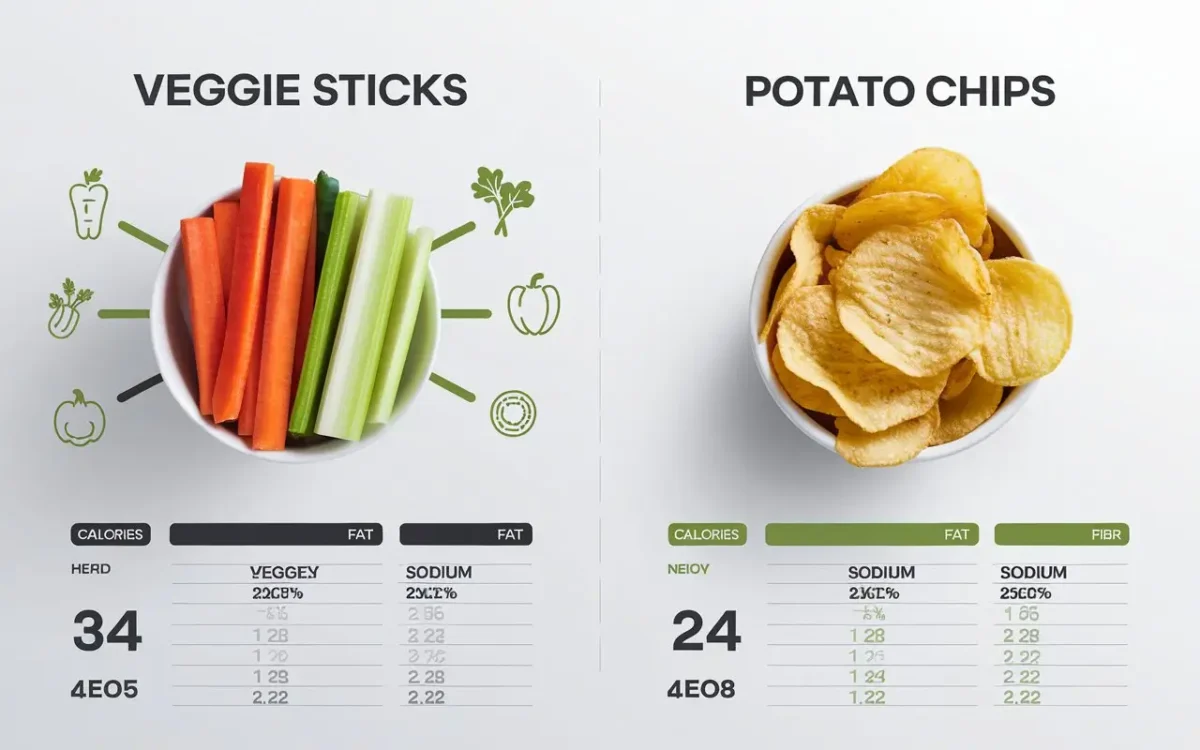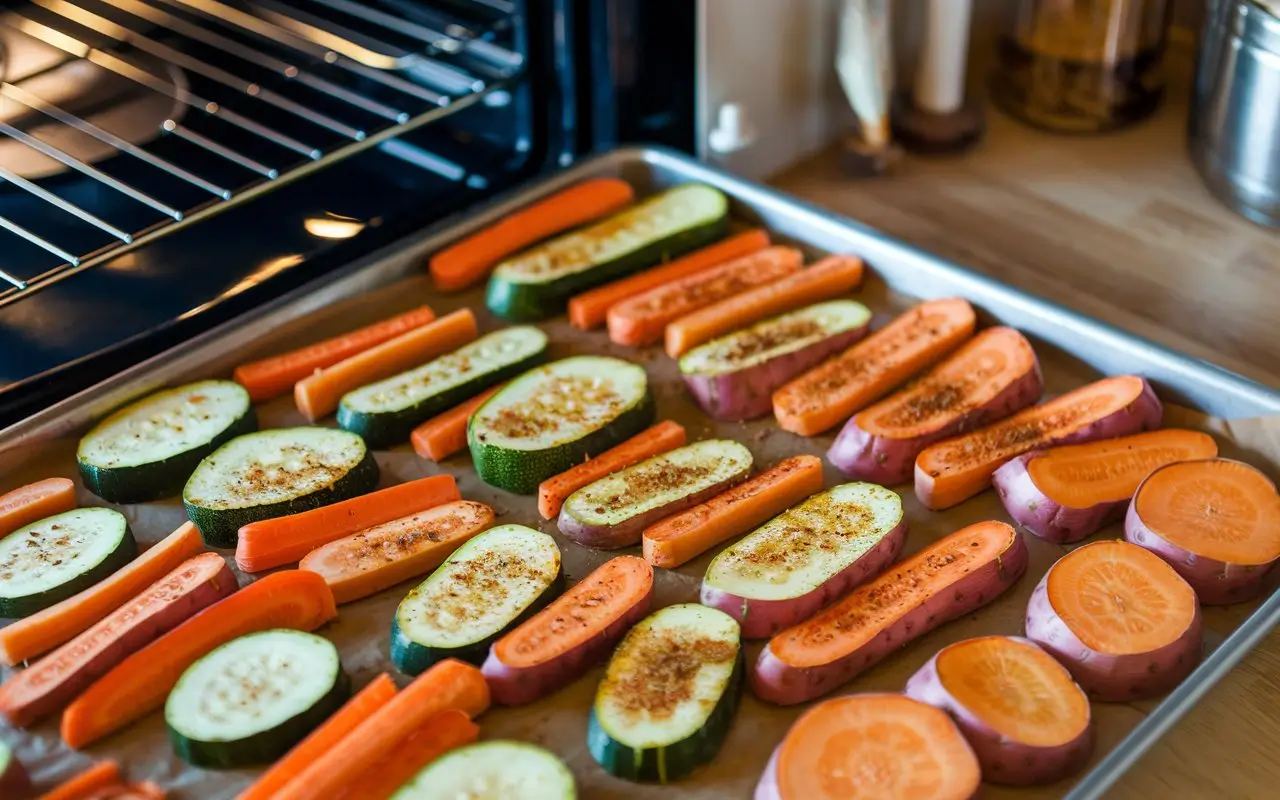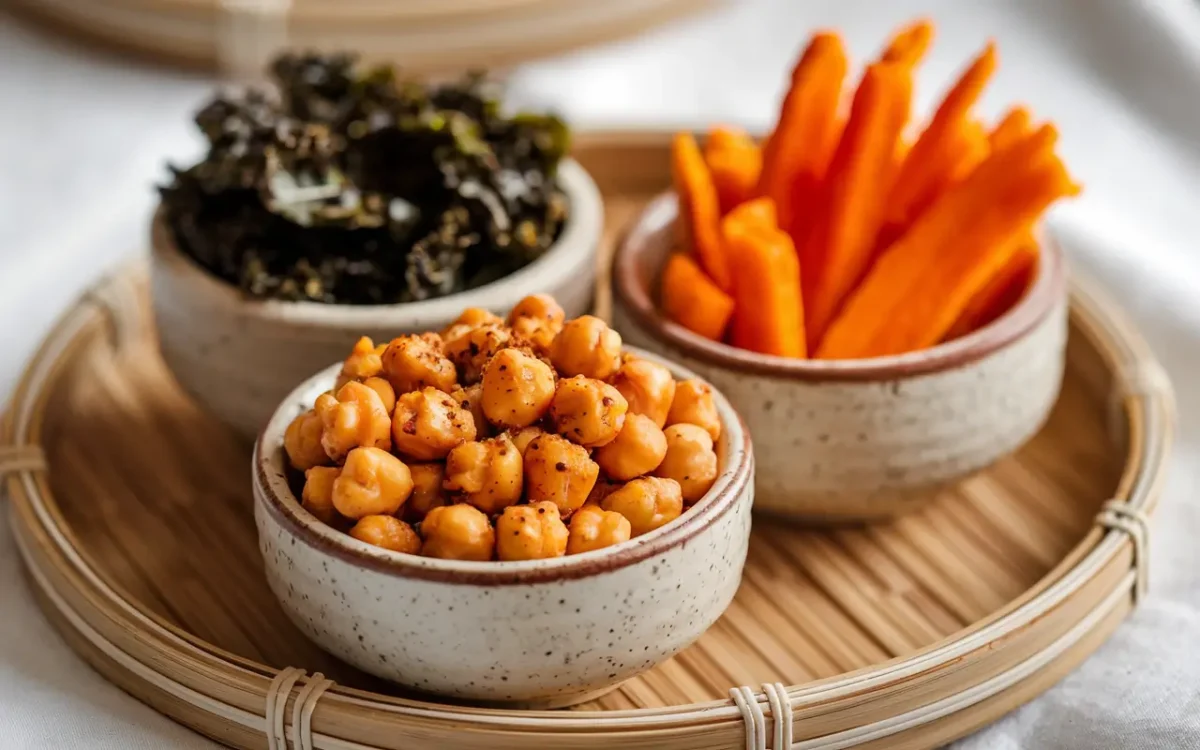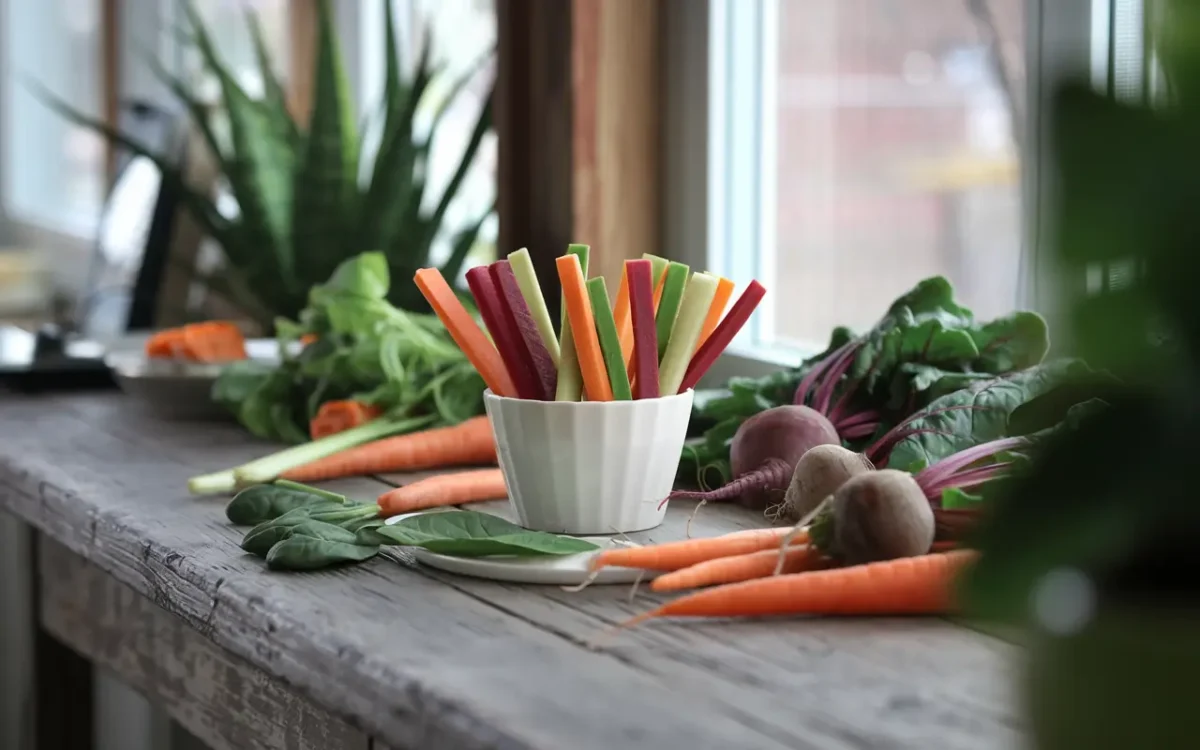The Ultimate Guide to Veggie Sticks: Are They Really Healthy?
Crunchy, colorful, and often marketed as a better-for-you alternative to regular chips, veggie sticks have taken over snack aisles everywhere. But are these crispy snacks as wholesome as they sound? In this guide, we’re diving into everything you need to know about veggie sticks—from what they’re made of, how they stack up nutritionally, and whether they’re safe for kids, to homemade alternatives and smart snacking tips.
We’ll also answer some of the most common questions people ask about veggie sticks and clear up a few surprising myths. So, if you’ve ever tossed a bag of these “healthy” snacks into your cart and wondered if you were making the right choice, keep reading.
What Are Veggie Sticks?
Understanding Veggie Sticks: The Basics
Let’s start with the basics—what exactly are veggie sticks? Despite the name, these snacks aren’t simply dried vegetables. Most veggie sticks are processed products made by combining potato starch, potato flour, and a blend of powdered vegetables like spinach, tomato, and beet. Then, the mixture is shaped into crunchy straws or sticks, baked or fried, and seasoned.
While they may resemble vibrant veggie-based snacks, they’re often far from the fresh veggies in your fridge. That said, they’re undeniably popular thanks to their texture, taste, and eye-catching colors.
Ingredients Typically Found in Veggie Sticks
Most commercial veggie sticks include:
- Potato starch or potato flour (as the primary base)
- Vegetable powders (such as spinach, beet, carrot, or tomato)
- Sunflower oil or canola oil
- Salt and various seasonings
- Added sugars and preservatives in some brands
While they may contain vegetable ingredients, they’re not quite the same as munching on raw carrots or roasted kale chips. These snacks are usually stripped of fiber and many nutrients during processing—something we’ll dig into more later.
And yes, you’ve probably guessed it—the word veggie in “veggie sticks” can be a little misleading!
Thanks! I’ve checked the sitemap, and there are no existing articles on veggie sticks or vegetable-based snacks from Hightasty.com that are highly relevant to this specific topic. So, I’ll proceed without internal links for now, ensuring the content still follows Rank Math SEO best practices.
Are Veggie Sticks Actually Healthy?
Nutrition Breakdown: Calories, Fats, and Additives

At first glance, veggie sticks might seem like the holy grail of healthy snacking. They’ve got “veggie” in the name, they’re crispy, and they’re often marketed as “better than chips.” But here’s the kicker—most veggie sticks are far from a health food.
On average, a serving of veggie sticks contains about 130–150 calories, 7 grams of fat, and very little protein or fiber. They’re often made from potato starch and corn flour, with trace amounts of vegetable powders tossed in for color. And let’s not forget the added salt, oils, and sometimes sugar that help enhance flavor—but not your health.
So while they may be slightly lower in calories than regular potato chips, they don’t offer much in terms of real nutritional value. They’re more like a dressed-up version of traditional chips.
Comparison with Traditional Potato Chips
Here’s a quick reality check: veggie sticks are often just as processed as the chips they claim to outshine. They might have a colorful hue thanks to beet or spinach powder, but they’re still mostly carbs, fats, and sodium.
Compared to potato chips, veggie sticks might have a touch less fat and fewer calories per serving. However, they lack whole-food nutrition like fiber, antioxidants, and real veggie texture. So if you’re choosing them just for health reasons, you may want to rethink it.
That said, everything in moderation, right? Snacking smarter means understanding what you’re really getting.
Types of Veggie Sticks on the Market
Popular Brands and Their Key Ingredients
Walk into any grocery store and you’ll spot dozens of veggie stick options lining the snack aisle. Some of the most recognizable brands include:
- Sensible Portions Garden Veggie Straws
- Terra Vegetable Chips
- Brad’s Organic Veggie Chips
These brands vary slightly in formulation, but they mostly rely on the same core: potato flour, corn starch, vegetable powders, and oil. Some include beet, spinach, kale, or carrot powder for color and a dash of marketing appeal.
What they don’t include, unfortunately, is much of the actual whole vegetable. That’s right—those bright colors come more from natural dyes than real veggies you’d recognize on your plate.
Baked vs Fried: Which Is Better?
You’ll often see baked veggie sticks advertised as a lighter, healthier option compared to their fried counterparts. And sure, baking can reduce fat content. But here’s the twist—baked doesn’t always mean better.
Many baked versions still rely on processed starches and refined oils. The real difference? A few grams of fat saved per serving. So if you’re aiming for healthy snacking, it’s better to reach for whole food-based snacks like roasted chickpeas or vegetable dumplings instead.
So, while the variety is impressive, the nutritional differences among most veggie sticks brands are minor at best.
Veggie Sticks for Kids and Toddlers
Are Veggie Sticks Safe and Nutritious for Toddlers?
When it comes to snacks for the little ones, parents often turn to veggie sticks thinking they’re a healthier option. And honestly, who could blame them? The word “veggie” screams healthy, right? But let’s pause for a second.
While veggie sticks may seem toddler-friendly, they’re not exactly bursting with nutrients. These snacks are low in fiber, vitamins, and real veggies. What’s more, some versions are high in sodium, which isn’t ideal for young children.
The texture can also be tricky—some veggie sticks dissolve quickly, but others can pose a choking risk depending on the brand and how they’re eaten. Always check the packaging for age recommendations and supervision guidelines.
Pediatrician Insights and Recommended Serving Sizes
Pediatric dietitians often suggest limiting ultra-processed snacks, even if they look like they’re full of veggies. Instead, offer real, soft veggies like steamed carrots or cucumber slices. If you’re going to give veggie sticks, keep it occasional, not a daily go-to.
And portion size matters! A small handful (less than a serving size listed on the bag) is plenty for a toddler’s snack.
For more delicious kid-friendly snack ideas, check out our recipe article on banana spinach pancakes—a healthy option even picky eaters will love.
Homemade vs Store-Bought Veggie Sticks
DIY Veggie Stick Recipes You Can Try at Home

Craving that crunch without the processed mystery? Homemade veggie sticks could be your answer. They’re super customizable and way healthier than most store-bought versions. Think roasted carrot fries, zucchini sticks, or sweet potato wedges seasoned with olive oil and your favorite spices.
One easy method is slicing fresh veggies into stick shapes, lightly coating them in breadcrumbs or almond flour, and baking them until crisp. You’ll get the veggie flavor, texture, and fiber that most packaged snacks lack.
Cost, Freshness, and Nutritional Differences
When it comes to cost, homemade snacks often win. A few fresh veggies go a long way, and you can skip all the additives and artificial flavors. Plus, they’re fresher and contain real whole food nutrients like vitamin A, potassium, and antioxidants.
Want a delicious homemade veggie idea? Our grilled asparagus guide is perfect for a crispy, nutrient-packed snack or side dish. or visit https://www.allrecipes.com/search?q=Veggie+Sticks
Hidden Ingredients to Watch For
Additives, Preservatives, and Flavorings in Veggie Snacks
Here’s the thing—while veggie sticks may look innocent, the ingredient list often tells a different story. Many brands include hidden additives like maltodextrin, monosodium glutamate (MSG), and artificial coloring to enhance flavor and appearance. Not exactly what you’d expect in a “healthy” snack, right?
Some veggie sticks also contain preservatives like TBHQ or citric acid to extend shelf life. While small amounts are generally considered safe, eating too many ultra-processed foods over time can lead to health concerns. That’s why checking the label matters more than ever.
How to Read the Nutrition Label Like a Pro
Want to snack smarter? Flip the bag over and look beyond the calorie count. First, scan the ingredient list—if real vegetables aren’t in the top three, that’s a red flag. Then, look at sodium, added sugars, and saturated fat. The fewer additives, the better.
Ultimately, not all veggie sticks are created equal. Some are much closer to chips than carrots—so choose wisely!
Healthier Snack Alternatives to Veggie Sticks

Real Vegetable Chips, Kale Chips, and Roasted Chickpeas
If you’re craving crunch but want to ditch the empty calories, there are plenty of veggie sticks alternatives that actually deliver on nutrition. Think kale chips, baked carrot fries, or roasted chickpeas. These snacks are made from whole ingredients and are often packed with fiber, protein, and micronutrients.
Many stores now carry clean-label versions with just a few ingredients. Or, you can whip up a batch at home—no mystery powders, just real food and spices.
How These Alternatives Stack Up Nutritionally
Here’s where it gets real: unlike veggie sticks, whole veggie-based snacks keep most of their natural nutrients. Roasted chickpeas, for example, are full of plant-based protein and crunch like a dream. Kale chips? Loaded with antioxidants and vitamins A and C.
Not only do these alternatives satisfy your salty cravings, but they also give your body something back. Now that’s a smart swap worth making.
FAQs About Veggie Sticks
Are veggie sticks actually healthy?
It depends on what you mean by healthy. While veggie sticks are often marketed as a better snack choice, they’re still highly processed. They’re usually made from potato starch and flavored with vegetable powders rather than whole vegetables. Sure, they might have fewer calories than regular chips—but they don’t offer much in terms of nutrients. So, enjoy them in moderation, but don’t let the name fool you.
What are veggie sticks made of?
Most veggie sticks contain a blend of potato flour, corn starch, and small amounts of spinach, beet, or carrot powder. These are formed into straw-like shapes and then baked or fried. Many also include oils, salt, and added flavorings to boost their taste. So while the word “veggie” might suggest health, the ingredients say otherwise.
Are veggie puffs actually healthy?
Much like veggie sticks, veggie puffs fall into the “snack-smart-but-not-too-smart” category. They’re made using similar ingredients and don’t offer a ton of fiber or real vegetable content. They can be better than greasy chips, but they still don’t stack up to snacks made from whole foods.
Are veggie straws ok for toddlers?
In small amounts, yes. But veggie straws and veggie sticks should be treated like treats—not daily snacks. They’re low in real nutrients and can sometimes be a choking hazard depending on the texture. When in doubt, consult your pediatrician and always supervise snack time.
Final Verdict: Should You Eat Veggie Sticks?
So, what’s the final word on veggie sticks? They’re tasty, crunchy, and often better than traditional chips when you need a quick fix. However, they’re not exactly the vegetable-packed super-snack they pretend to be.
If you enjoy them, go for it—but do it in moderation. For everyday snacking, try to lean toward whole food alternatives like roasted veggies, homemade kale chips, or air-popped popcorn. That way, you’ll get the crunch and the nutrition your body craves.
Remember, just because something says “veggie” on the label doesn’t always mean it’s good for you. Always snack smart!
Let me know if you’d like a meta description, featured snippet, or anything else to optimize this article further!

